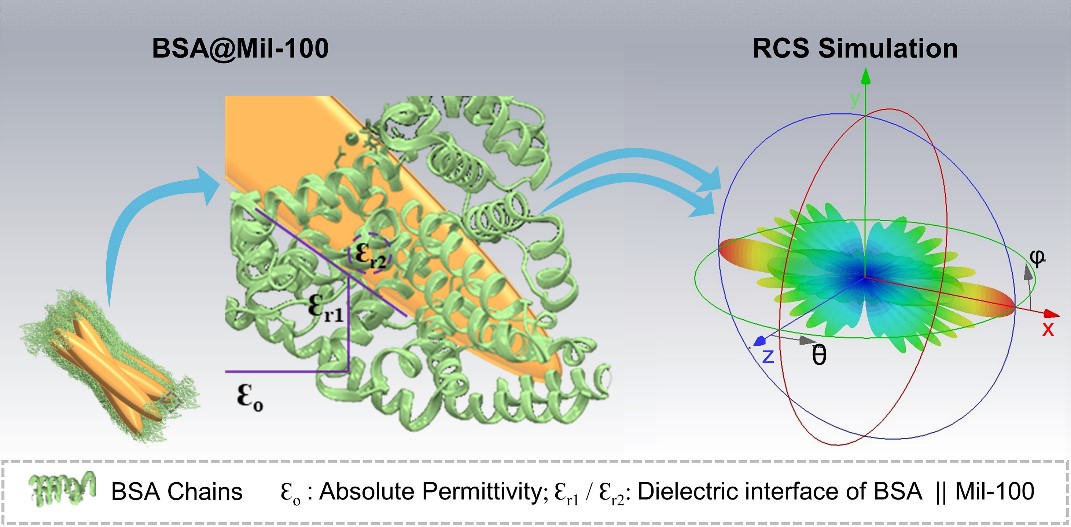
Recently, a research team led by Professor WANG Junfeng from the High Magnetic Field Laboratory of the Hefei Institutes of Physical Science (HFIPS), Chinese Academy of Sciences (CAS) developed bioinspired metal organic framework (Bio-MOF) to achieve efficient electromagnetic wave absorption.
The research was published in Small.
Metal organic frameworks (MOFs) are considered one of the excellent precursors for electromagnetic wave absorption materials. Usually, MOF derived absorbing materials exhibit unique advantages in impedance matching and microwave loss due to their excellent conductivity, magnetism, sufficient defect sites, and interface structure. However, to achieve efficient absorption of electromagnetic waves over a wide frequency range, multiple challenges must be addressed while maintaining lightness and flexibility.
In this study, by using biomineralized bovine serum albumin (BSA) protein as templates, the research team successfully controlled the crystal structure of Mil-100, a type of Fe-based MOF materials.
This led to the development of a unique biological MOF material called BSA@Mil-100, which exhibited a hierarchical self-assembled structure ranging from nano to micrometer scales, and exhibited remarkable microwave absorption (MA) properties.
"Compared to traditional Mil-100, BSA@Mil-100 demonstrated significant improvements in its ability to absorb microwaves," said Sajid ur Rehman, first author of the paper.
The research findings revealed that at a Super High Frequency range of 8.85 GHz, BSA@Mil-100 achieved remarkably enhanced microwave absorption performance. It reached as high as with -58 dB absorption value and a broadband width of 6.79 GHz.
This approach indicates a promising frontier in the design of high-performance microwave absorption materials, according to the team.

The results uncover intricate structural parameters, particularly protein cage thickness, and their impact on electromagnetic properties. The present exploration dissects their role in shaping dielectric properties and achieving optimal impedance matching, shedding light on structural mechanisms that contribute to the material's radar cross section (RCS) absorption performance. (Image by Sajid)